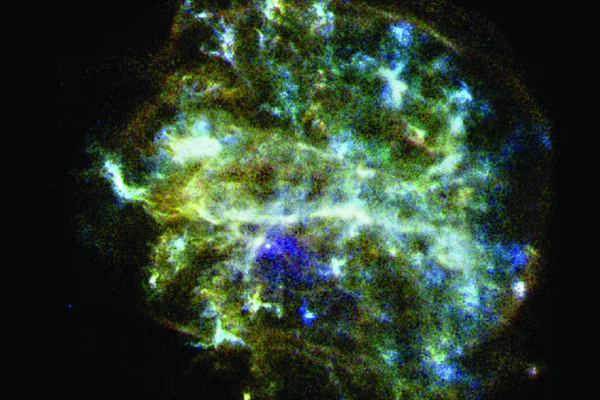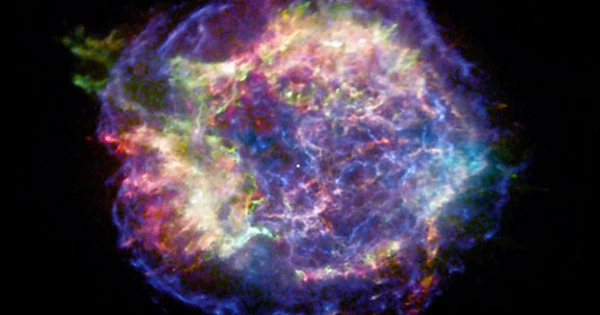This type of explosion is known as a Type Ia supernova. These supernovae are thought to occur when a white dwarf, a type of dying star, accretes material from a companion star until it reaches a critical mass, causing a thermonuclear explosion. Type Ia supernovae are particularly useful for astronomers because their intrinsic brightness is relatively consistent, making them useful for measuring distances to faraway galaxies. The presence of significant amounts of oxygen and magnesium in the explosion may indicate that the white dwarf had accreted material from a companion star that was particularly rich in those elements.
A supernova explosion discovered by researchers at the University of Turku in Finland has expanded our understanding of the later life stages of massive stars. Supernova explosions are created when massive stars die. A supernova’s elements reflect the composition of the dying star at the time of the explosion.
“Stars are glowing balls of mostly hydrogen gas, nature’s lightest element. They shine by joining atomic nuclei to form heavier elements and energy “Hanindyo Kuncarayakti, Academy of Finland Research Fellow from the Department of Physics and Astronomy at the University of Turku in Finland, explains.
We learn a lot about massive stars’ later stages of life by observing new types of supernovae. This, on the other hand, poses new challenges to our theories about the evolution of stars.
Seppo Mattila
Massive stars, which have 8 times the mass of the Sun or more, have onion-like structures with layers of different elements inside them. As we travel deeper into a star, we come across layers of heavier elements than hydrogen, such as helium, carbon, oxygen, and so on.
A star may lose some, or even all, of its mass during its lifetime. The most common method is to eject streams of particles, a process known as stellar winds, which occurs in the Sun as well. Some stars lose mass rapidly, and may completely deplete their hydrogen envelope. As a result, the inner layers of the skin may be exposed.

Astronomers have previously identified supernovae with circumstellar matter rich in hydrogen, as well as those rich in helium. Very recently, only in 2021, researchers have discovered supernovae with the carbon-oxygen circumstellar matter. These different kinds of objects represent a sequence of stellar envelope stripping and the accumulation of stripped matter around the star, starting from the lightest and outermost element – hydrogen.
A team led by Academy Research Fellow Kuncarayakti has discovered a supernova that possibly extends our understanding of this sequence where massive stars lose their mass. Supernova (SN) 2021ocs was observed in a survey using the 8.2-m European Southern Observatory (ESO) Very Large Telescope (VLT) in Chile.
“The spectrum looked like nothing we have seen before. It had strong features of oxygen and magnesium, and the object was unusually long-lasting and blue,” Kuncarayakti describes.
These findings suggest that the oxygen-magnesium-rich expanding gas from the SN 2021ocs explosion may be colliding with the circumstellar matter. The precursor star could have formed such circumstellar matter through a mass loss only 1,000 days before the supernova explosion. As a result, the observations function as a time machine, probing the dying star’s activities just before the final explosion.
“We learn a lot about massive stars’ later stages of life by observing new types of supernovae. This, on the other hand, poses new challenges to our theories about the evolution of stars” Professor of Astronomy Seppo Mattila of the University of Turku, who also took part in the study, says.





